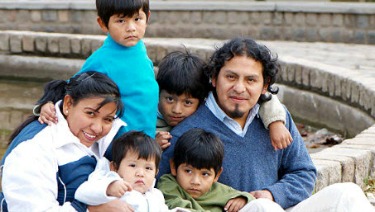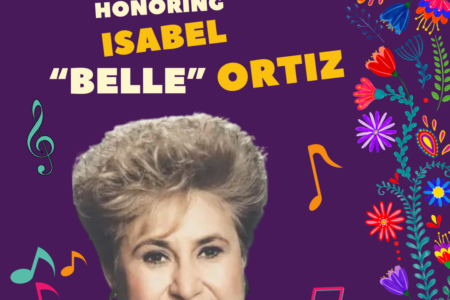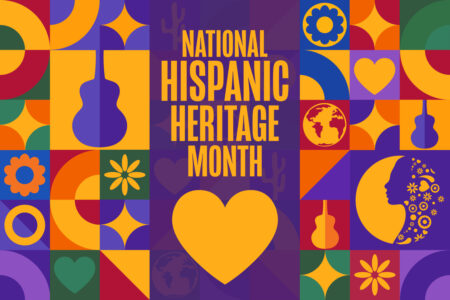
Share On Social!
A new Public Charge rule is part of U.S. immigration policy, as of Feb. 24, 2020.
Supporters say it will protect taxpayers from overspending on welfare. They say it will help accept self-reliant, industrious immigrants.
Detractors say it will inflame deportation fears among immigrants. They say it will cause immigrants to forgo needed food, housing vouchers, and health care—even if eligible.
Here is what Latinos and all people should know about Public Charge.
1. What Is ‘Public Charge’?
The Public Charge rule has served as an immigration policy since the 1880s.
The rule sets up “grounds of inadmissibility.” That is, it spells out reasons that a person could be denied a green card, visa, or admission” to the U.S., according to the Immigrant Legal Resource Center.
A person would be a “public charge” if they would be reliant on a few types of public benefits.
“In deciding whether to grant an applicant a green card or a visa, an immigration officer must decide whether that person is likely to become dependent on certain government benefits in the future, which would make them a ‘public charge,'” according to the legal resource center.
2. How Did the Public Charge Rule Change?
The new Public Charge rule went into effect Feb. 24, 2020.
 Now a “public charge” would be someone who received public benefits—such as food stamps—for more than 12 months in a 36-month period, according to U.S. Citizenship and Immigration Services (CIS)
Now a “public charge” would be someone who received public benefits—such as food stamps—for more than 12 months in a 36-month period, according to U.S. Citizenship and Immigration Services (CIS)
The change expands the factors that make otherwise legal immigrants ineligible for entry, legal permanent residency, or citizenship because they receive certain public benefits, according to a report from the New York Daily News.
“Until now, such benefits were limited to general cash assistance or long-term institutionalization at the government’s expense,” according to the report. “Non-cash benefits like Medicaid, food stamps, and housing programs were available to immigrants for decades. Over 13.5 million legal immigrants use Medicaid and subsidized health insurance plans to remain healthy.”
Here are the full list of benefits in consideration for Public Charge:
- Supplemental Security Income;
- Temporary Assistance for Needy Families;
- Any federal, state, local, or tribal cash benefit programs for income maintenance (often called general assistance in the state context, but which may exist under other names);
- Supplemental Nutrition Assistance Program (SNAP; formerly called food stamps);
- Section 8 Housing Assistance under the Housing Choice Voucher Program;
- Section 8 Project-Based Rental Assistance (including Moderate Rehabilitation);
- Public Housing (under the Housing Act of 1937, 42 U.S.C. 1437 et seq.); and
- Federally funded Medicaid (with certain exclusions).
“The determination of an alien’s likelihood of becoming a public charge at any time in the future is a prospective determination that is based on the totality of the alien’s circumstances and by weighing all of the factors that are relevant to the alien’s case,” according to the U.S. CIS website.
3. Who Does the Public Charge Rule Apply To?
Public Charge does not apply to all immigrants, according to the Immigrant Legal Resource Center:
- This law mainly impacts those seeking permanent resident status through family member petitions.
- Grounds of inadmissibility only apply to those seeking entry at our borders or those applying for a green card (lawful permanent residence).
- Many immigrant categories are exempt from the public charge ground of inadmissibility, even if they might be applying for status or a green card. U visa holders, T visa holders, asylees, refugees, and many more categories are exempt.
- Public charge laws do not apply in the naturalization process, through which lawful permanent residents apply to become U.S. citizens.
“It does not apply to aliens who serve in the U.S. military or to pregnant women and aliens under the age of 21 who receive Medicaid benefits,” according to a report by legal and homeland security experts in The Daily Signal. “It also won’t apply to Medicaid benefits paid for emergency medical or school-based services.”
4. What Is the U.S. Government’s Aim with the Public Charge Rule?
 Proponents say the rule changes aim to save taxpayers’ money by preventing more people from utilizing social services, like welfare or food stamps.
Proponents say the rule changes aim to save taxpayers’ money by preventing more people from utilizing social services, like welfare or food stamps.
Officials also say the new Public Charge rule stresses the idea that immigrants “must be self-sufficient and rely on their own capabilities and the resources of family, friends, and private organizations instead of public benefits,” according to a news release.
“Through the public charge rule, President Trump’s administration is reinforcing the ideals of self-sufficiency and personal responsibility, ensuring that immigrants are able to support themselves and become successful here in America,” said Ken Cuccinelli, director of U.S. CIS, in a press briefing.
But the change could have detrimental affects on certain populations.
5. How Might the Public Charge Rule Affect Latino Hunger, Housing, and Health?
It is well known that nutrition assistance programs such as WIC and SNAP are useful tools for keeping kids and their families healthy, particularly for Latino and minority populations.
Yet this is the first time food stamps are part of a Public Charge decision.
This will lead to fear and hunger, said Joan Maya Mazelis, a sociologist at Rutgers University-Camden, according to the Philadelphia Inquirier.
“Immigrants are afraid and are misunderstanding a complex situation,” Mazelis said. “But they don’t want to draw attention to themselves, and so they lose food stamps, which make a huge difference to their health. It’s depressing.”
A longer stay in poverty also could occur, said Ana Lamb of the League of United Latin American Citizens (LULAC), according to the Tampa Bay Times.
Latinos would be apt to skip public aid because they fear it would jeopardize their immigration status—something too many Latino immigrants are already doing, Lamb said.
“Hispanics work very hard, pay their taxes and often do not receive what they should,” Lamb told the Tampa Bay Times. “[Public charge] is a discriminatory policy that is made to install a new filter against legal immigrants.”
6. How Is Public Charge Already Changing Latino Access to Health-Promoting Assets?
About 13% of adult immigrants or their family members have already started avoiding non-cash public benefits, according to a May 2019 Urban Institute report.
 “This figure is even higher among low-income families (21%). Hispanic adults from immigrant families are twice as likely to avoid these programs compared to non-Hispanics (21% vs. 9%),” New York Daily News reports. “Even families who will be unaffected by the new public charge rule — those already with green cards or who are naturalized citizens — are avoiding public benefit programs to which they are entitled out of fear and confusion.”
“This figure is even higher among low-income families (21%). Hispanic adults from immigrant families are twice as likely to avoid these programs compared to non-Hispanics (21% vs. 9%),” New York Daily News reports. “Even families who will be unaffected by the new public charge rule — those already with green cards or who are naturalized citizens — are avoiding public benefit programs to which they are entitled out of fear and confusion.”
News reports are emerging daily that Latinos are forgoing beneficial public programs:
- In Arizona, health advocates are struggling to keep Latino families enrolled in benefits like food stamps and health insurance.
- In Tampa, Fla., immigrants fear the new rules.
- In New York, advocates worry the rule will shut the country’s doors to low-income immigrants and people of color, such as those from the Caribbean.
“Generations of immigrants have come to this country with little more than a dream in their pockets, but the president’s Public Charge Rule is an egregious attempt to infringe upon the values of our nation,” New York Attorney General Letitia James said in a statement.
7. Did the Public Speak Up on the Change to the Public Charge Rule?
Yes.
Regulations.gov had a 60-day public comment period on Public Charge in late 2018.
 In that span, more than 200,000 people—including some from Salud America!—submitted public comments on the proposed changes.
In that span, more than 200,000 people—including some from Salud America!—submitted public comments on the proposed changes.
“While most of the comments haven’t yet been publicly posted online, it’s fair to say that most of the activity around the proposal has come from outraged immigrant-rights and economic-justice groups — as well as medical associations deeply concerned about the potential for families to forego necessary health services for fear of jeopardizing their immigration status,” Dara Lind wrote for Vox.
8. Will the Change to Public Charge Stand Up Over Time?
The U.S. Department of Homeland Security (DHS) published the new rule on Aug. 14, 2019.
However, before implementation on Oct. 15, 2019, several federal courts legally prohibited DHS from implementing the new Public Charge rule. The U.S. Supreme Court stayed the last remaining injunction on Feb. 21, 2020, and thus DHS was able to implement the final rule on Feb. 24, 2020.
Appeals, however, are still working their way through the court system.
And this isn’t the only immigration issue currently at play.
In addition to Public Charge, the U.S. Supreme Court is currently considering a case that would allow federal leaders to decide the fate of asylum-seekers with little oversight.
“This would be the first time in the history of the country the supreme court is allowing someone to be deported without being able to test the legality of their deportation,” said Lee Gelernt of the American Civil Liberties Union (ACLU), according to The Guardian.
By The Numbers
44
million
immigrants live in the United States



